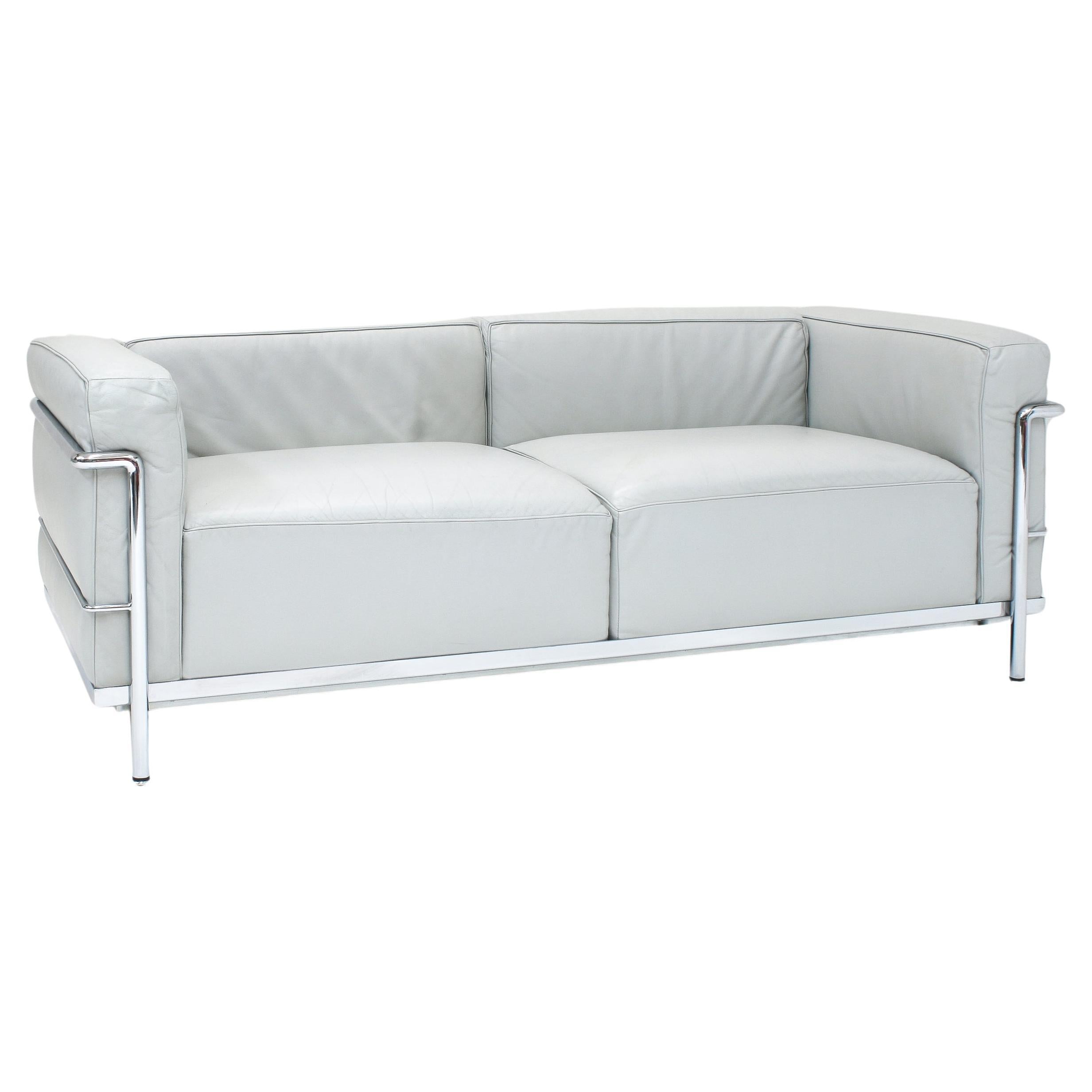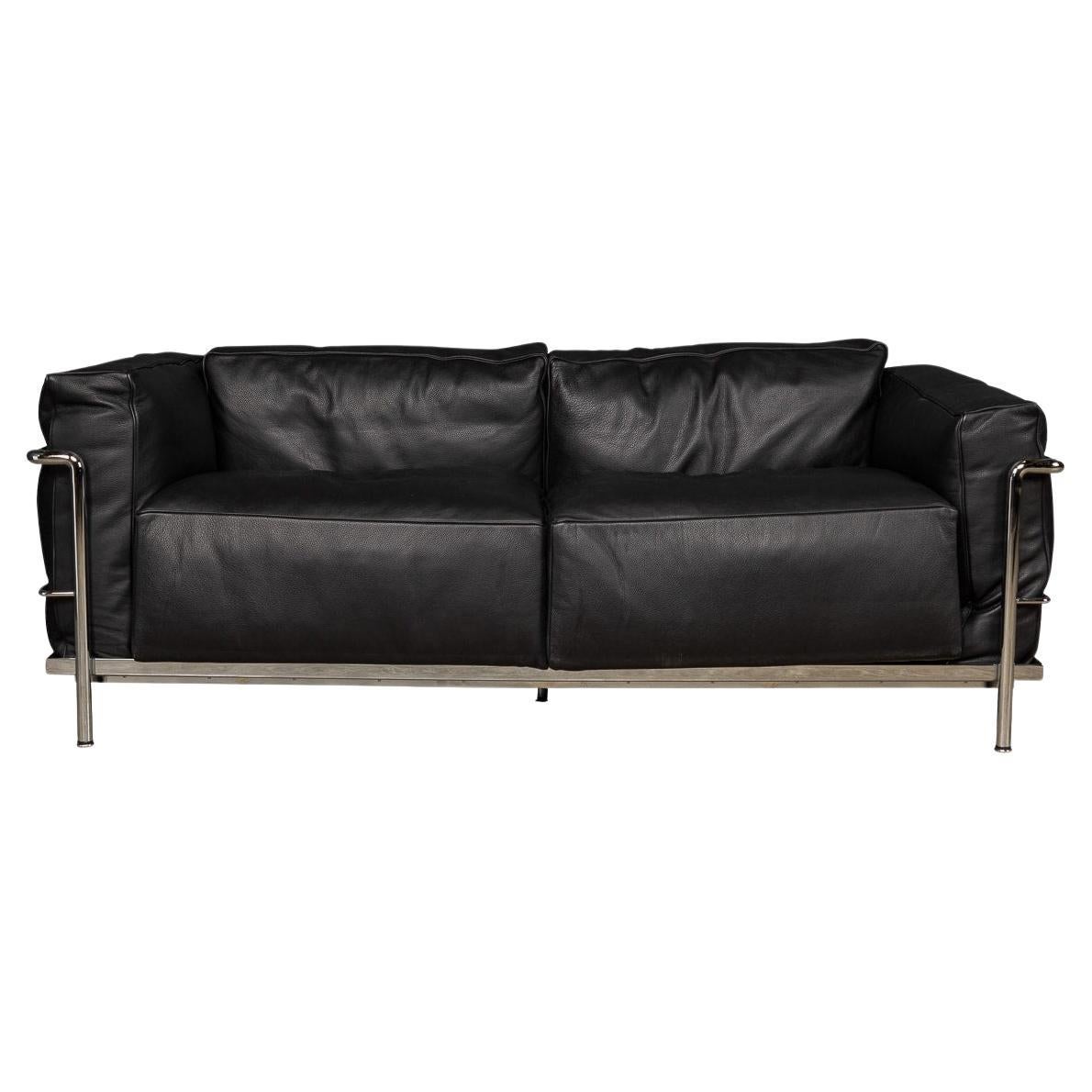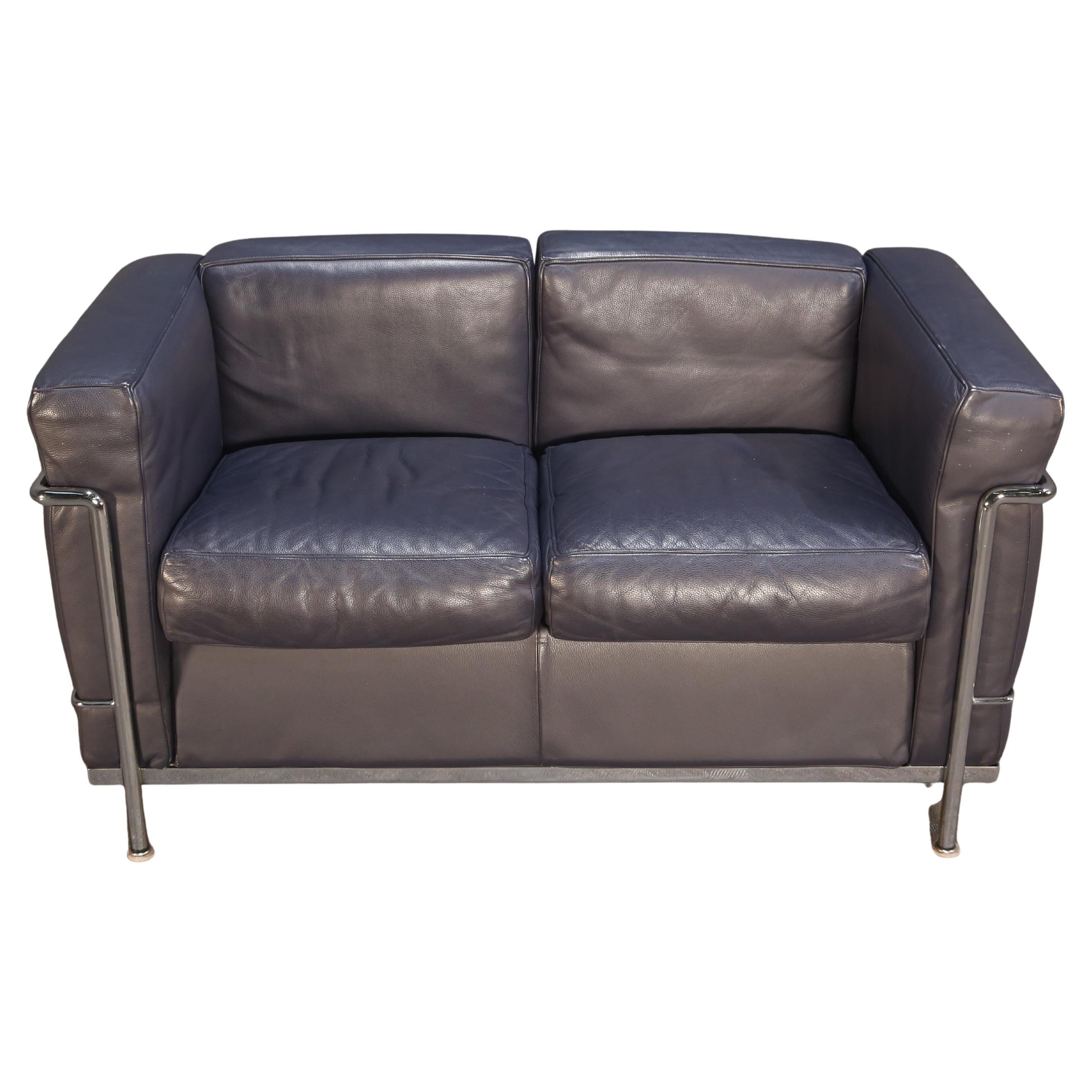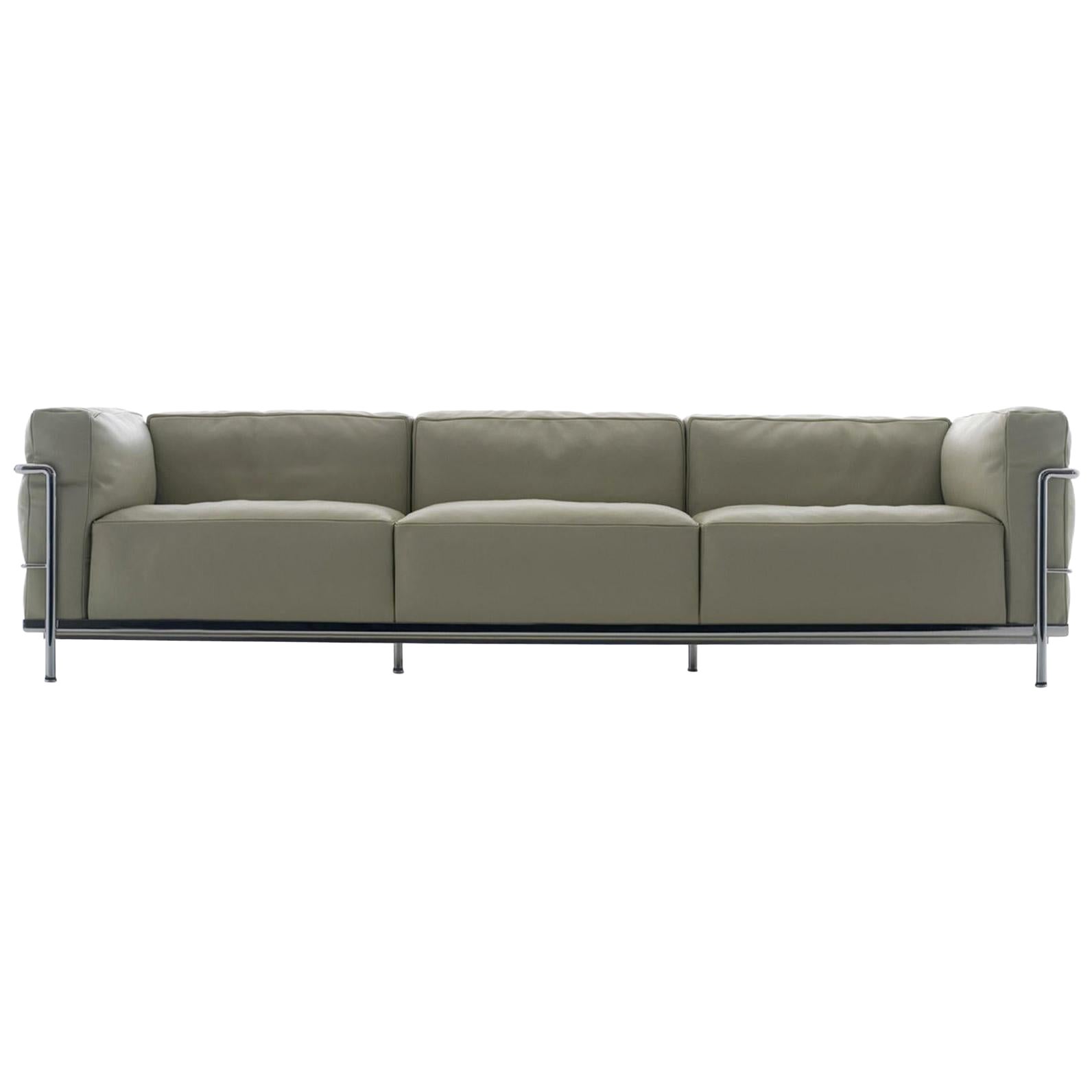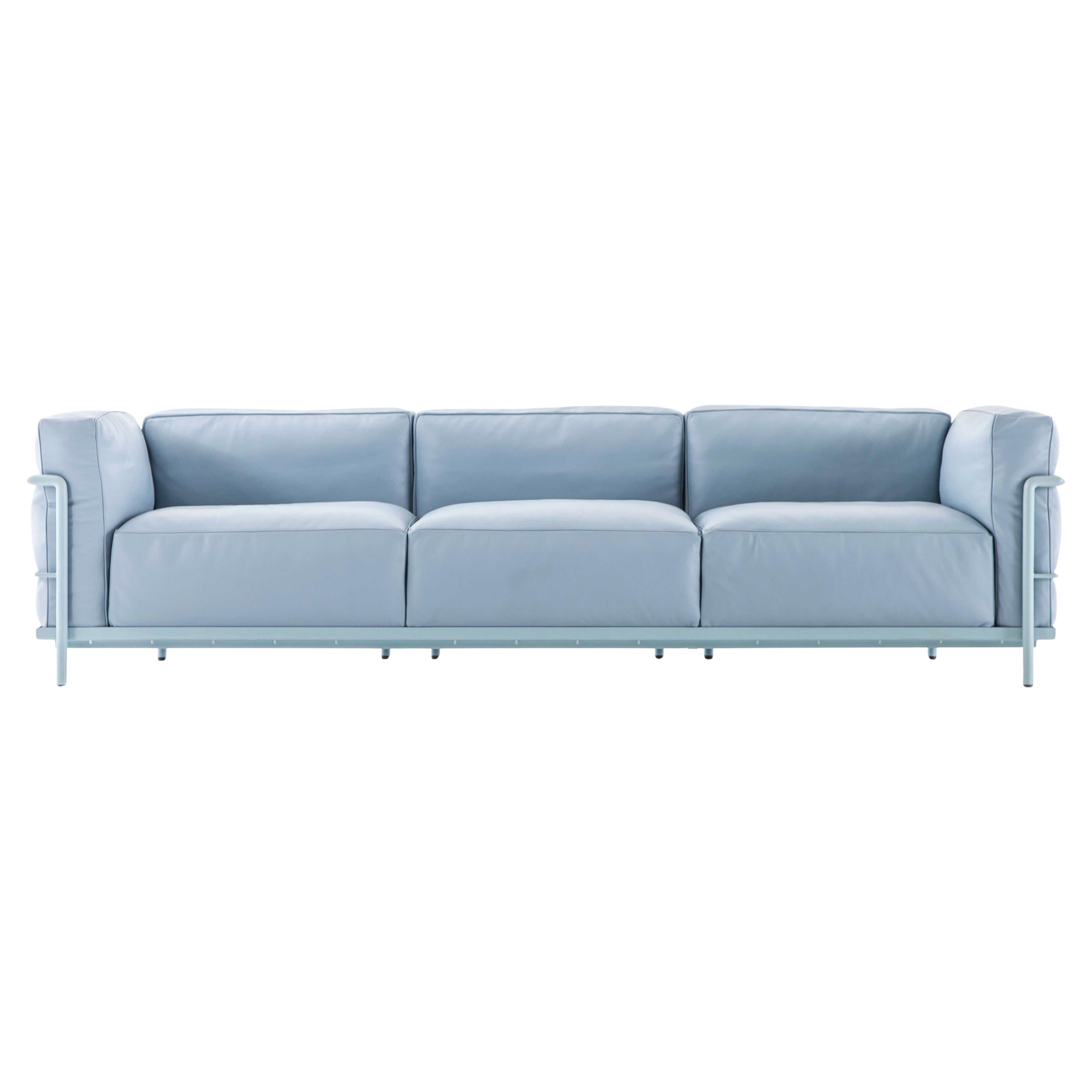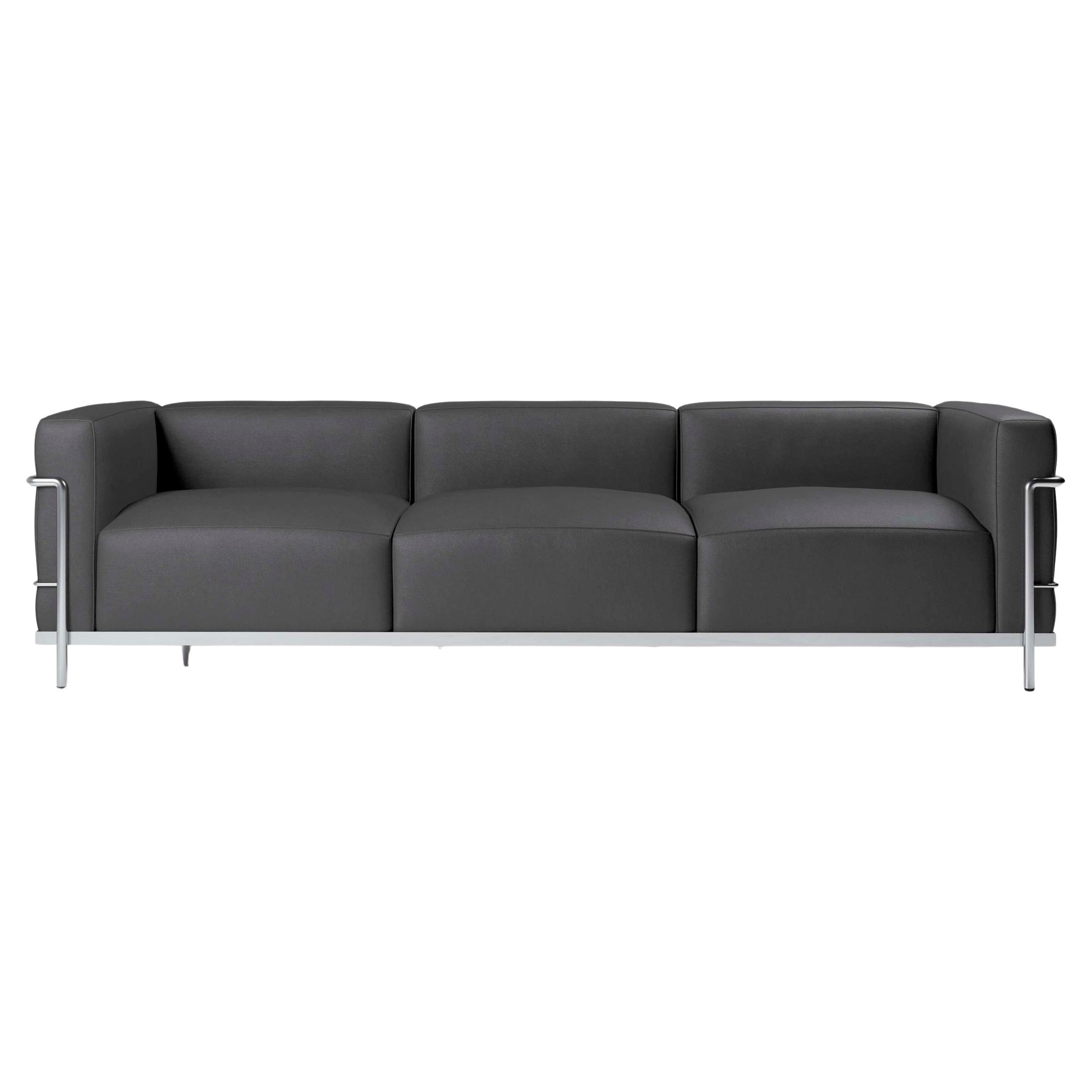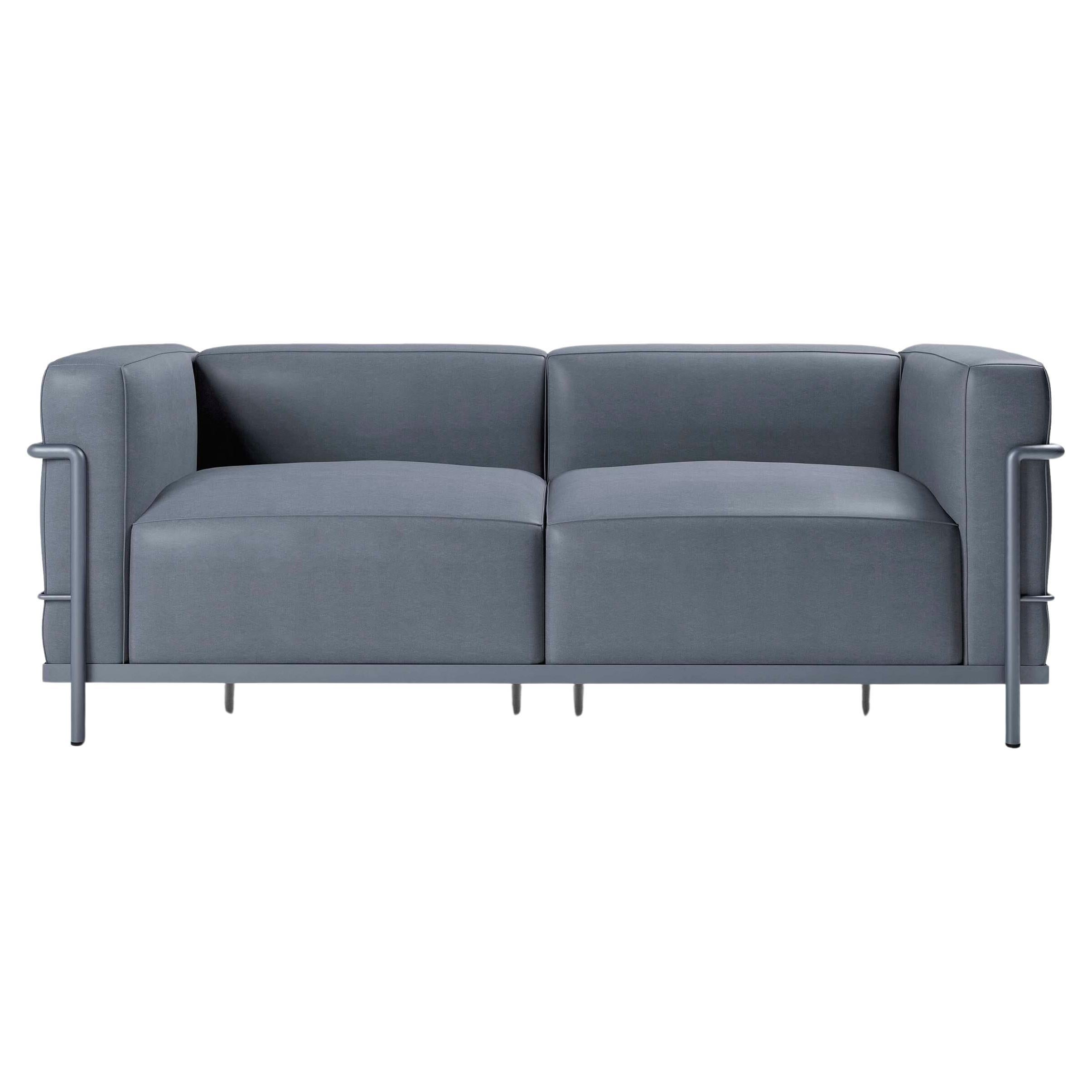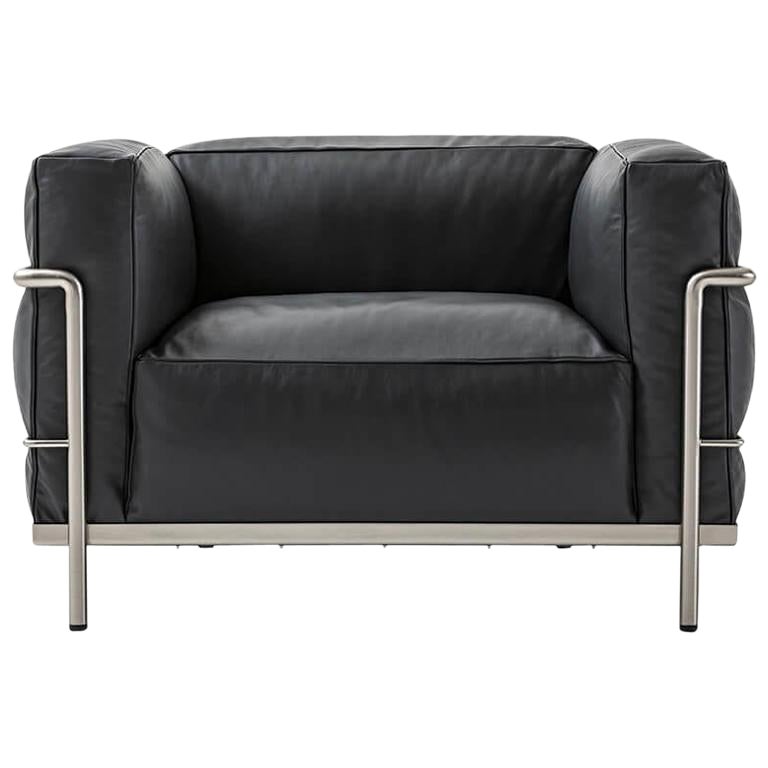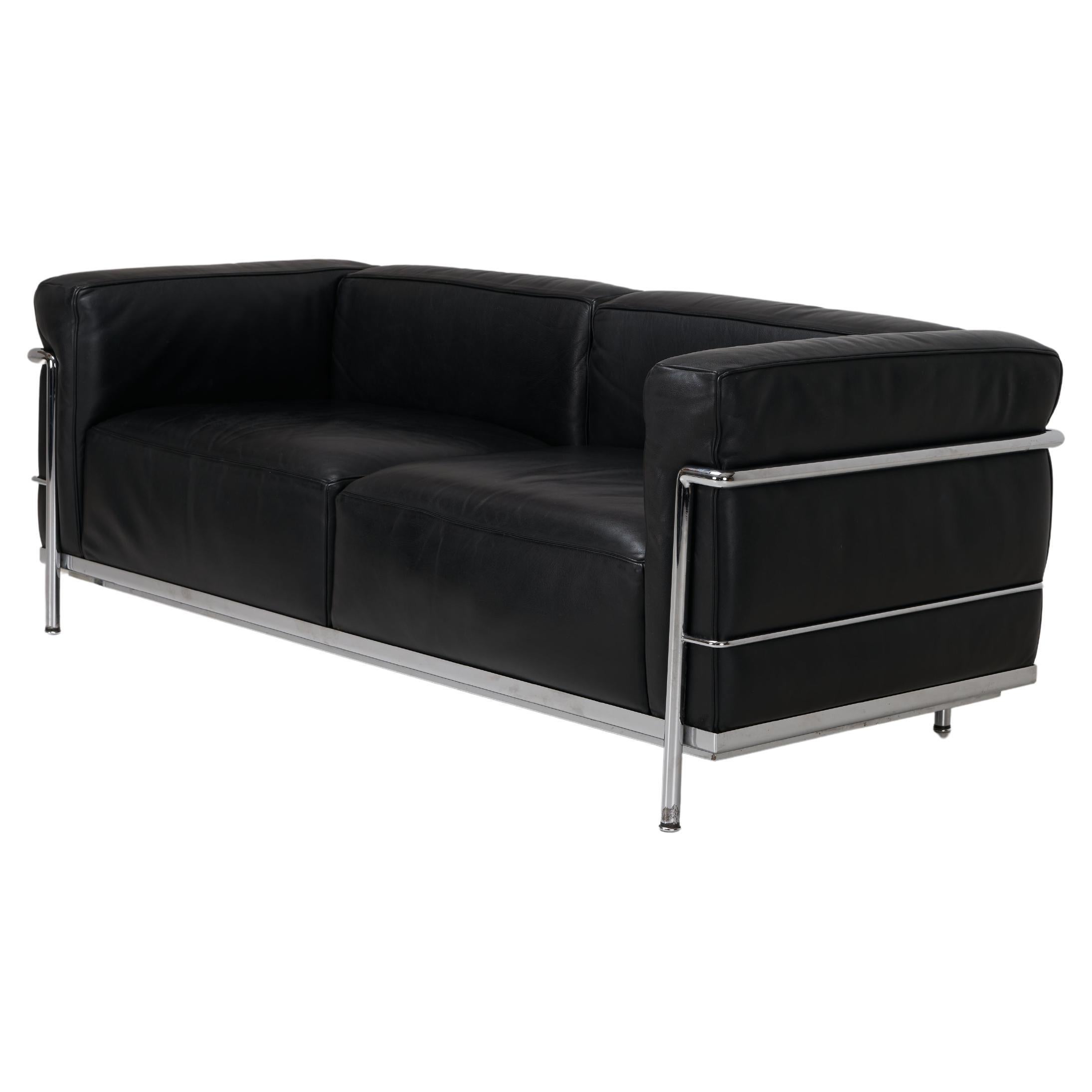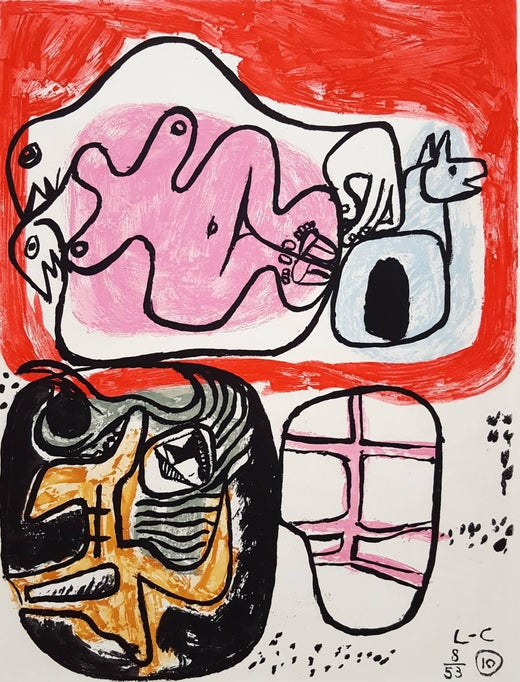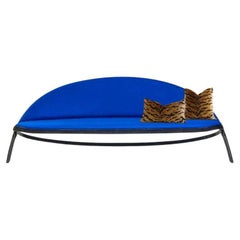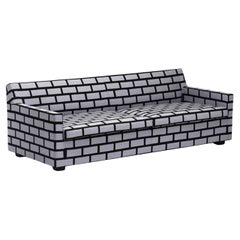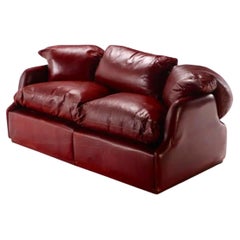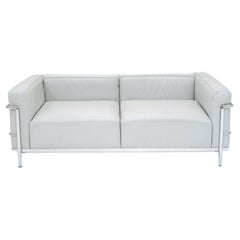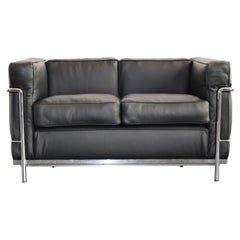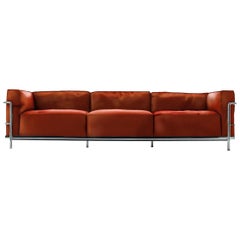
Le Corbusier LC3 Divano Three-Posti Fauteuil Grand Confort Sofa, 1928, Cassina
View Similar Items
Le Corbusier LC3 Divano Three-Posti Fauteuil Grand Confort Sofa, 1928, Cassina
About the Item
- Creator:Le Corbusier, Pierre Jeanneret, Charlotte Perriand Cassina (Designer),Cassina (Manufacturer),Le Corbusier (Designer)
- Design:
- Dimensions:Height: 24.5 in (62.23 cm)Width: 93 in (236.22 cm)Depth: 25 in (63.5 cm)
- Style:Mid-Century Modern (Of the Period)
- Materials and Techniques:
- Place of Origin:
- Period:
- Date of Manufacture:2010s
- Condition:
- Seller Location:Brooklyn, NY
- Reference Number:1stDibs: LU4190314131581
Le Corbusier, Pierre Jeanneret, Charlotte Perriand Cassina
The trio of Charlotte Perriand, Le Corbusier and Pierre Jeanneret is known for its widely acclaimed and influential modernist furniture designs.
In the early 1920s, Charles-Édouard Jeanneret, the revered Swiss-French architect known professionally as Le Corbusier, entered into collaboration with his cousin, Pierre Jeanneret, who shared his grand vision for egalitarian building projects and interior design. They later recruited the pioneering young female architect Charlotte Perriand to join their venture.
Perriand's installation Bar sous le toit (“bar under the roof”), a recreation of part of her own apartment shown at the 1927 Salon d’Automne in Paris, caught Le Corbusier's attention and prompted the cousins to recruit her to work at their architecture practice. She would be tasked with designing interiors and furniture. Such status was rare for a woman at the time — in fact, when Perriand sought work at Le Corbusier’s atelier mere months before the exhibition, he famously dismissed her with a sexist remark.
The collective called their shared project l’équipement d'intérieur de l’habitation (“the interior equipment of the house”), and they designed furniture that remains celebrated today. The LC series of armchairs, lounge chairs and sofas, for example, saw the designers working with tubular chrome steel and plush foam cushions upholstered in leather. Bereft of ornament and prized for its functionality, the series is currently manufactured by Cassina. The cohort's LC4 chaise lounge was displayed at the 1929 Salon d’Automne, and the spare but sculptural seat — as well as the group’s other furnishings — influenced the likes of Willy Rizzo as well as a range of other modernist designers and furniture innovators.
Reportedly owing to political differences, the trio’s collaboration ended in 1937. Le Corbusier and Pierre continued working together, primarily in architecture.
In the early 1950s, at the invitation of Indian Prime Minister Jawaharlal Nehru, Le Corbusier and his cousin collaborated on a building project in Chandigarh, India. While the Chandigarh project is most frequently associated with Le Corbusier, he didn’t actually move to India and instead monitored progress during visits to the region. Pierre, however, was extensively involved. As the project’s first chief architect, Pierre remained onsite to oversee implementation of design and to coordinate construction of schools, government housing, shopping centers and more.
In 1940, Charlotte Perriand moved to Japan after France fell to Nazi forces. She was offered a position at the Japanese Ministry of Trade and Industry as a consultant on the country’s industrial arts. While there, Perriand adopted many Japanese artistic principles and incorporated them into her own revolutionary furniture designs. She would also closely collaborate with self-taught French furniture designer Jean Prouvé in the years that followed.
Time has shown that some of the works attributed to the Jeanneret cousins are either Perriand’s own designs or she was an uncredited contributor.
On 1stDibs, find an array of vintage Charlotte Perriand, Le Corbusier and Pierre Jeanneret furniture, including tables, storage cabinets and lighting.
Le Corbusier
Swiss-born Charles-Édouard Jeanneret, best known by his adopted name Le Corbusier, was a highly influential architect, designer, painter, urban planner and writer whose career spanned almost five decades. His designs for sofas, chairs and other furniture are spare, minimal and efficient but at the same time offer supreme comfort.
A pioneer of progress-minded modern architecture, Le Corbusier sought to impose a rational order on the chaos of the world through design. He rejected the excessive architectural ornament and developed a style that became known as brutalism, creating buildings with elemental geometric forms that were made of industrial materials such as steel and reinforced concrete.
Le Corbusier believed that pure, well-designed spaces could offer a lesson in how little is needed to achieve happiness. To convey this notion, the architect prioritized modern, open interiors and emphasized light, rational designs. His architecture and interiors share a clear sense of space and structural order, underlining the beauty in harmony, proportion and simplicity.
Le Corbusier’s furniture espouses these same ideals. Collaborating with his cousin, Pierre Jeanneret, and trailblazing designer Charlotte Perriand, he devised such iconic pieces as the LC2 Petit Confort armchair and the LC4 chaise longue. Each couples a tubular chrome frame with soft, supple leather upholstery, lending an organic warmth to an industrially made design. In his furniture, Le Corbusier broke new ground in ergonomics.
The shape of the LC4 chaise is taken directly from the human form; the classic cowhide upholstery makes the sitter feel weightless; and the piece features an adjustable positioning mechanism to promote total relaxation. Bereft of ornament and prized for its functionality, the LC series created by Le Corbusier, Perriand, and Pierre is currently manufactured by Cassina.
Such planning and intelligence were the hallmarks of Le Corbusier’s career. Whether in his designs for private residences such as the Villa Savoye near Paris, apartment towers like the Unité D'habitation in Marseilles, or in his furniture, he worked toward a style of living that was expansive and flexible. The strength and simplicity of line of Le Corbusier’s sofas, chaise longues and other seating pieces give them a sculptural presence in any décor, yet they are sublimely restful. And as you will see on 1stDibs, Le Corbusier’s furniture reflects a worldly taste: it is at once refined, cosmopolitan and chic.
Find a collection of vintage Le Corbusier furniture for sale on 1stDibs.
More From This Seller
View AllMid-20th Century Italian Mid-Century Modern Sofas
Steel
21st Century and Contemporary British Post-Modern Sofas
Textile
21st Century and Contemporary Italian Mid-Century Modern Sectional Sofas
Silk, Velvet
Mid-20th Century Italian Mid-Century Modern Loveseats
Leather
Late 20th Century Italian Mid-Century Modern Books
Paper
Late 20th Century Italian Mid-Century Modern Sectional Sofas
Leather
You May Also Like
Mid-20th Century Italian Bauhaus Sofas
Chrome
Mid-20th Century Bauhaus Settees
Chrome
Mid-20th Century Italian Bauhaus Sofas
Steel, Chrome
21st Century and Contemporary French Sofas
Metal
21st Century and Contemporary Italian Modern Sofas
Steel
2010s Italian Mid-Century Modern Armchairs
Steel

